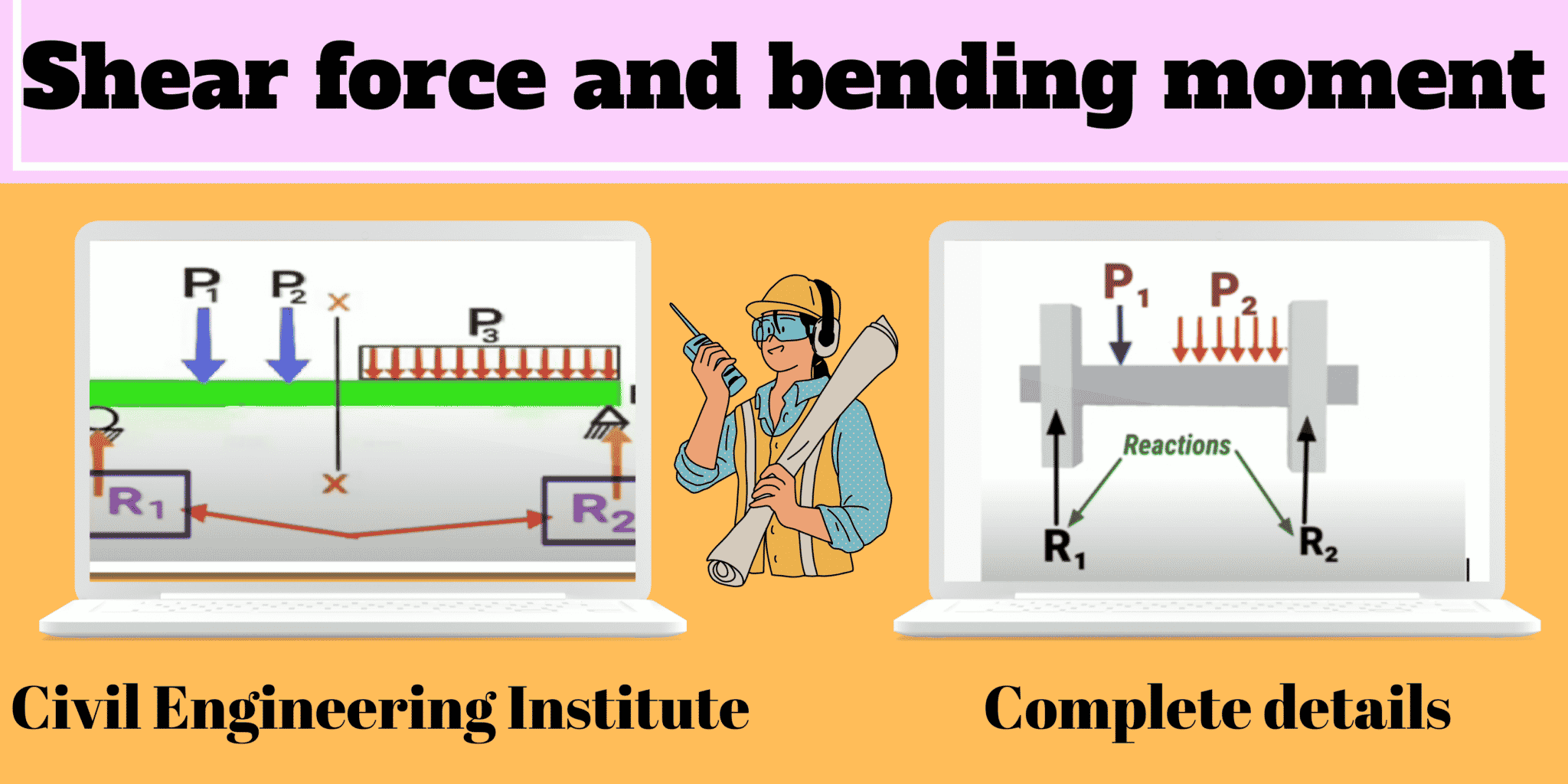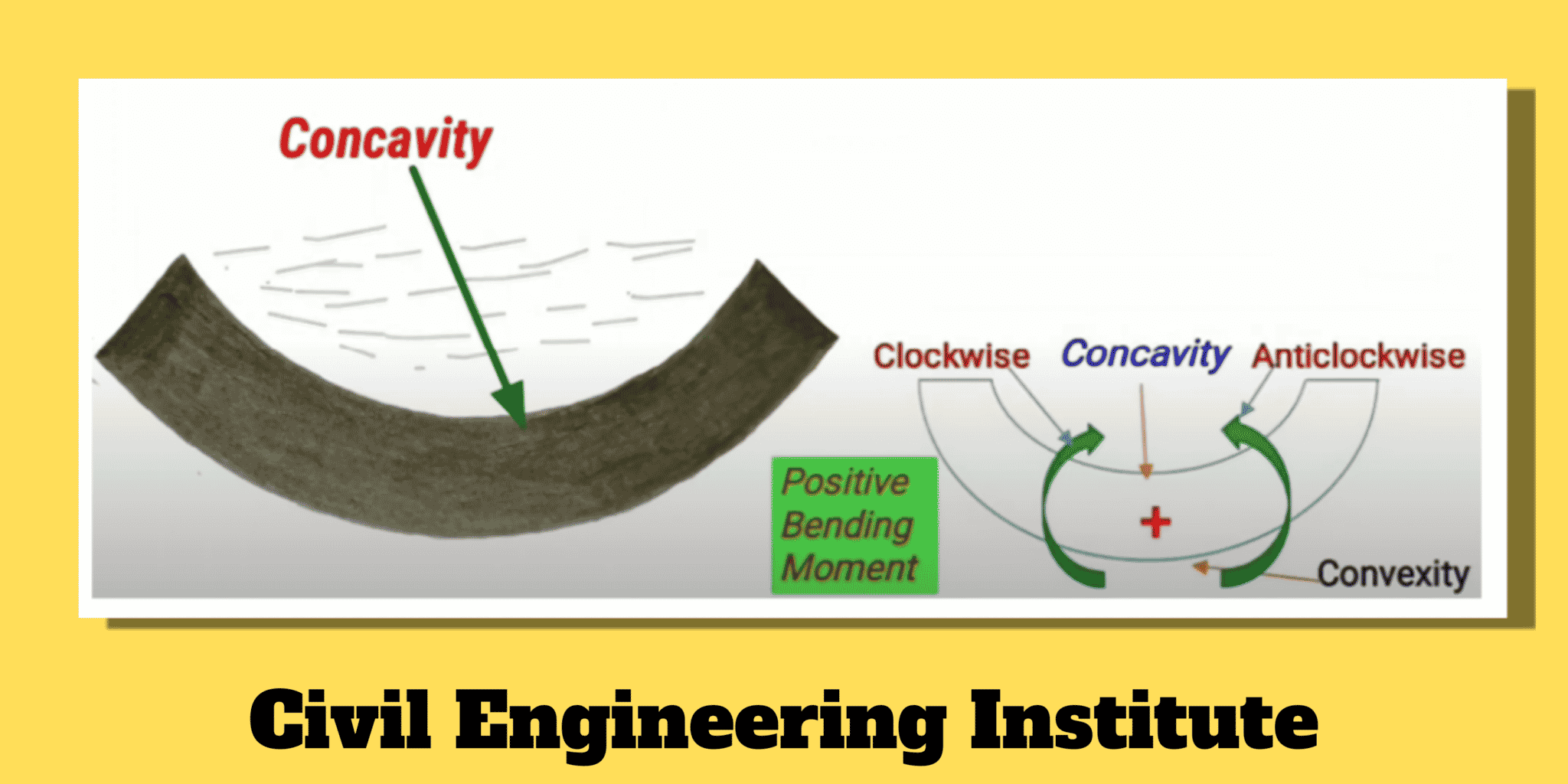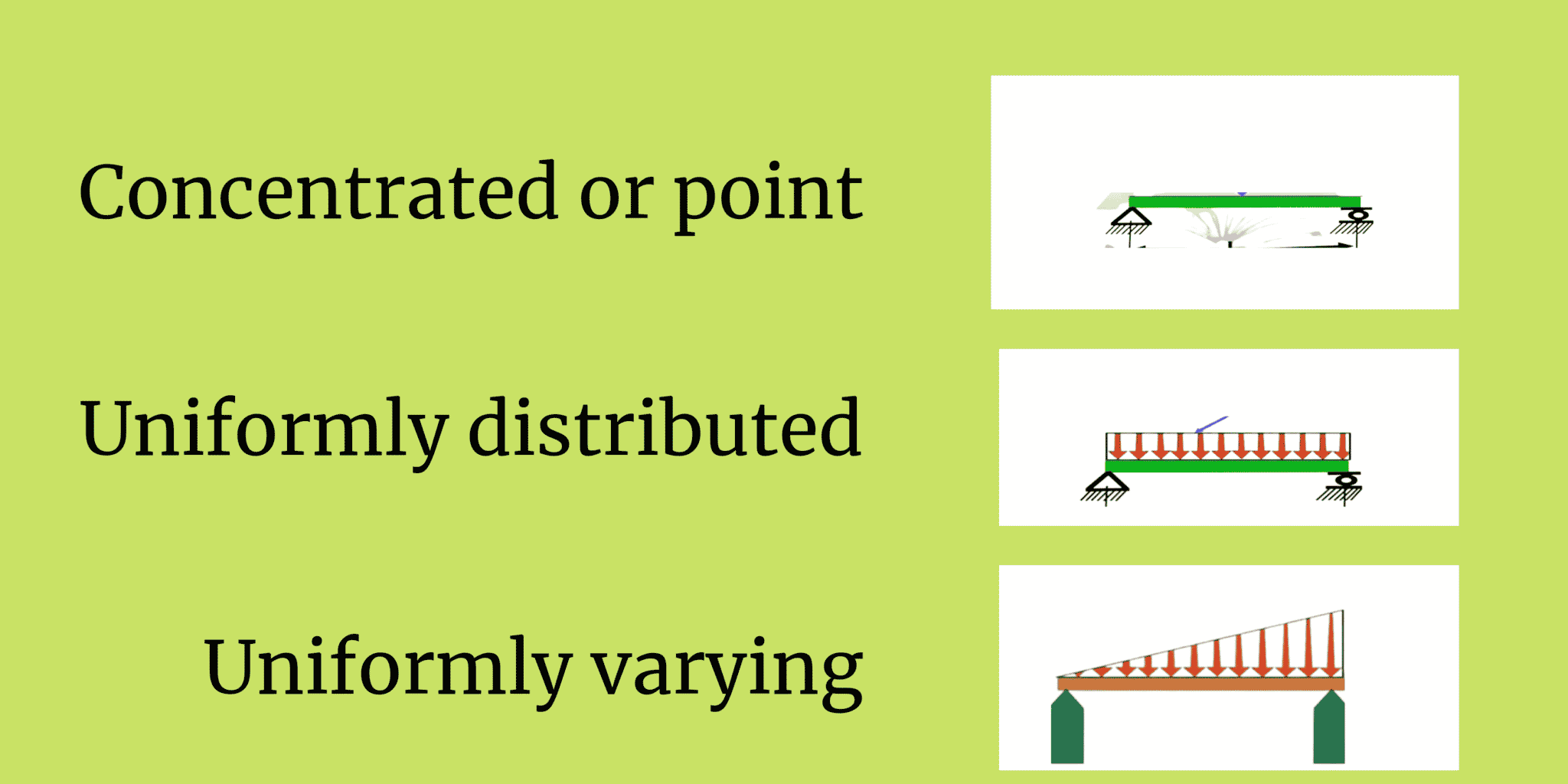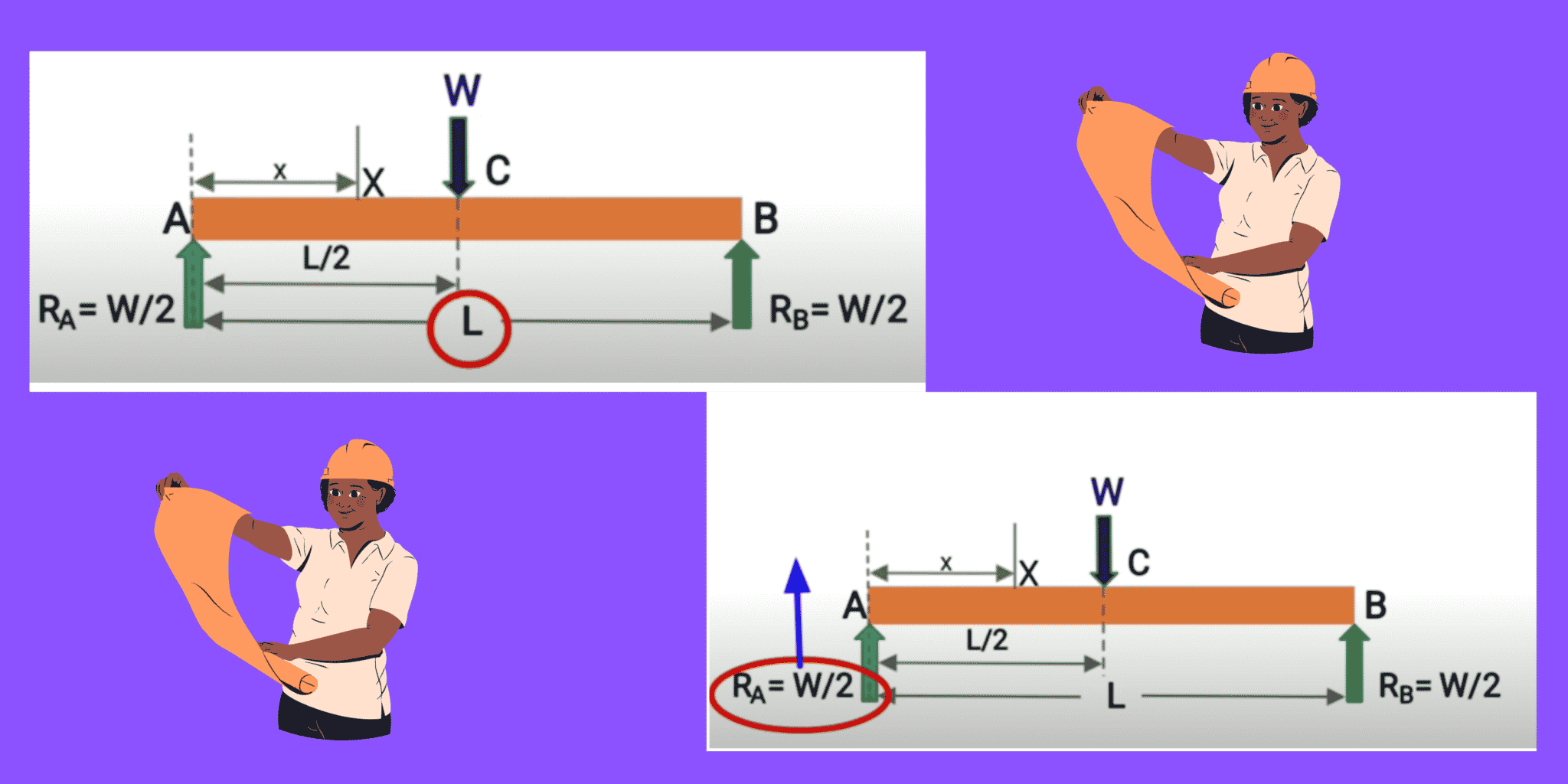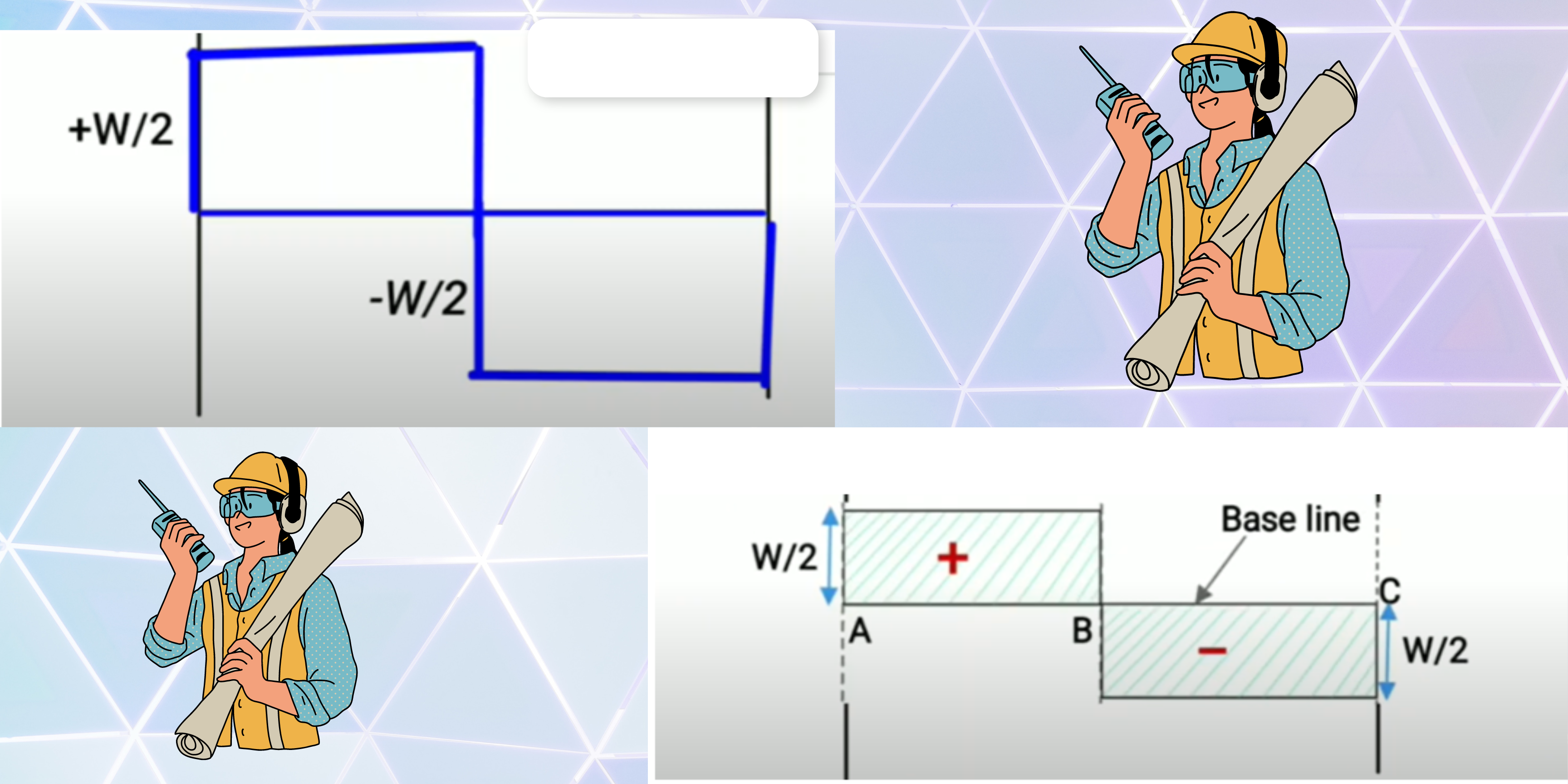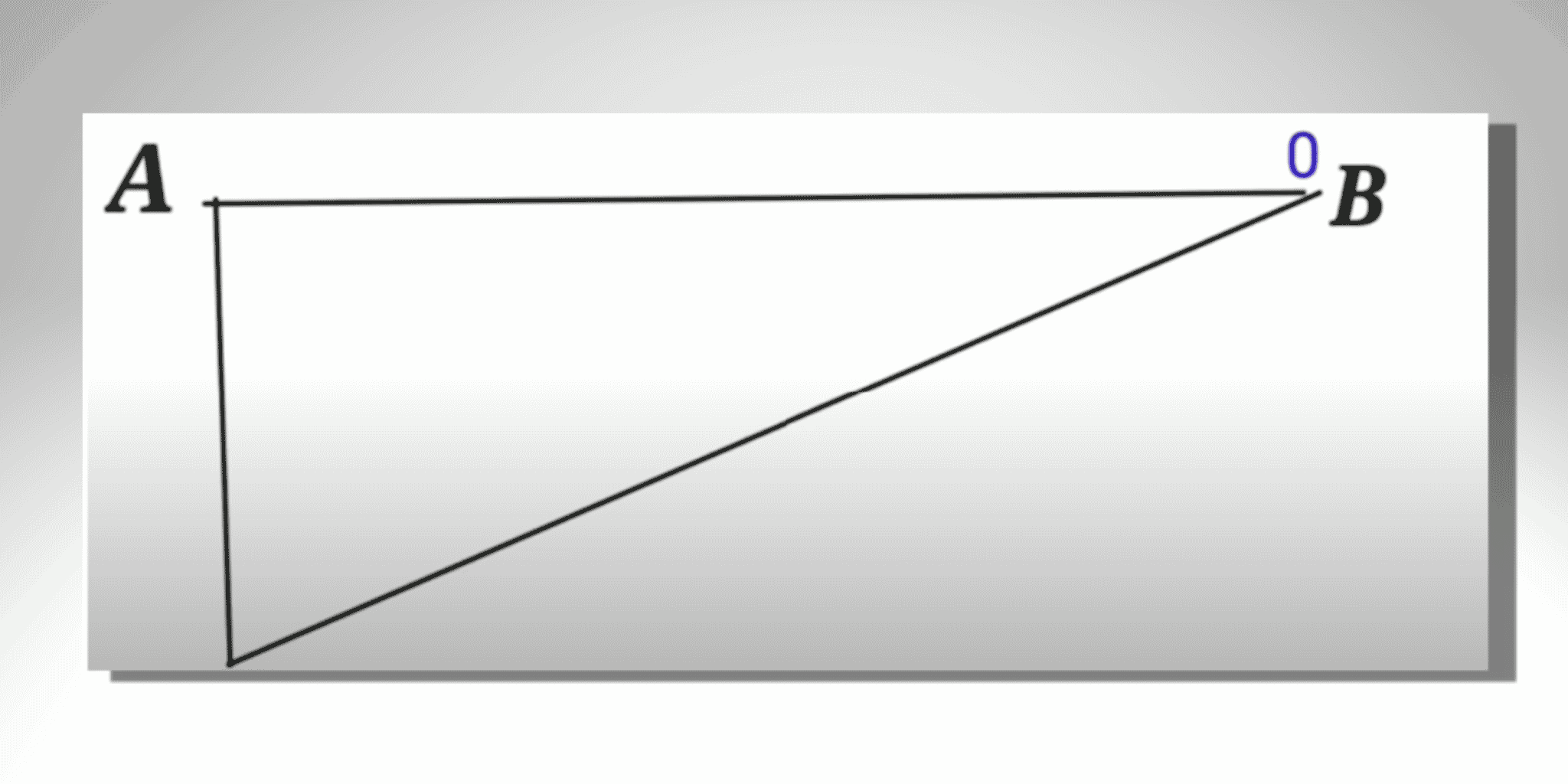Shear force and bending moment is an essential topic for any civil engineering students as well as those who are working at the site also. In construction before the casting of the beam, slab, and column you should know about shear force and bending moment in the construction elements . so in the article, we’re going to learn in detail about it .
What are shear force and bending moment
When a beam is subjected to a set up of loads and reactions as the result of which the internal forces and moments tend to set up within the beam. so this internal force is the shear force and internal moments are the bending moment.
Let’s consider a beam with a given set of loading that is p1, p2 and p3 supported at two points A and B .so the load is p1, p2, and p3 where the R1 and R2 are the reactions at support A and B.
Now let’s cut this beam into two parts one is the left which includes p1 and p2 and ends A and reaction R1 and the second part is the right which includes p3 and ends B with R2 reaction.
Let’s assume that the resultant of load and reactions to the left of section xx is vertically upwards .which is assumed to equal to F . and for equilibrium, the resultant of load and reactions to the right of section xx has to be equal to “F” But vertically downward .so this force is known as shear force.
Hence shear force may be defined as “ the algebraic sum of all the vertical forces either to the right or to the left of the section “
Now the Sign conventions for the shear forces
- The shear force will be positive if the resultant forces to the left of the section are upwards or to the right of the sarees downwards.
- If the resultant of forces to the left of the section is downwards or to the right of the area is upwards, the shear will be negative
now let’s assume, “ M” be the resultant of all the moment about a point just to the left section xx and be in a clockwise direction. for equilibrium, the resultant of all moments about a point just to the right of section xx has to be equal to “M” but the direction of this resultant moment will be counterclockwise
so here this resultant moment is known as the bending moment. hence the bending moment is defined as “ the algebraic sum of all the moments either to the right or to the left of a section ”.
Now the sign conventions for the bending moment
- Positive bending moment, the bending moment at a section will be positive if its tendency to bend a beam in a manner such that it can retain the water on its curvature. and the positive bending moment is also known as a sagging moment.
- Negative bending moment, the bending moment at a section will be negative if its tendency to bend a beam in a manner such that the curvature has convexity at the top. the negative bending moment is also known as a hogging moment.
Shear force and bending moment diagram
A diagram that shows the variation of shear force along the length of a beam is called a shear force diagram and a diagram that shows the variation of bending moment along the length of a beam is called a bending moment diagram
Before we are drawing the shear force and bending moment diagram we must know the different types of beams and types of load acting on them.
The various types of beams are :
- Simply supported beam
- Overhanging beams
- Fixed beam
- Cantilever beam
- Continues beam
Simply supported beam: it is a type of beam which is supported or resting freely at supports.
Overhanging beam: in this type of beam the span of the beam is extended to its supports, such type of beam is called an overhanging beam.
Fixed beam: a beam whose both the ends of its span are fixed or built-in walls are known as a fixed beam.
Cantilever beam: in this type of beam its span is fixed at one end and the other is free at the other end is known as a cantilever beam.
Continues beam: a beam that has more than two supports is known as a continuous beam.
The various types of load are :
- Concentrated load or point load
- Uniformly distributed load (UDL)
- Uniformly varying load ( UVL)
Concentrated load or point load: it is defined as a load that is considered to act at a point or you can say a load that is concentrated at a point is known as a point load.
Uniformly distributed load: it is defined as a load that is spread over a beam in a way that the rate of loading is uniform along the length. its mean load per unit length is uniform.
Uniformly varying load ( UVL): it is defined as a load that is spread over a beam in a way that the rate of loading varies from point to point along the beam. in this type of load, it may be at one end the load can be zero and increase uniformly to the other end. such a type of load is also known as a triangular load.
Shear force and bending moment diagram for
- Simply supported beam with a point load at its center
- Cantilever beam with a point load at its free end
SSB with a point load at its center
Consider a simply supported beam of span “L” carrying a point load “W” at a distance of “L/2” from both ends. so the reaction on both support will be Ra =Rb = W/2.
Now consider a section X-X between A and C at a distance of x from end A. the share force at section X-X will be equal to the resultant forces acting on the left portion of this section since we have considered the left portion of this section but the resultant force acting on the left portion of this section is “ W/2” acting upward.
And we already know that the resultant force acting upwards in the left portion is considered positive as per sign conventions.
Now let Fx = S.F at X-X section
Fx = +W/2
The shear force will remain constant between A and C and equal to +W/2 since there does not any extra load between A and C.
Now let’s consider a section between C and B at a distance of x from end A. The resultant force acting on the left portion of this section will be equal to (W/2-W) = -W/2 and this force will remain constant since there does not any extra load between C and B.
Shear force between C & B = -W/2
So we can say the shear force at C changes from +W/2 to – W/2.
To draw the shear force diagram we draw the baseline from A to B . at point A the force is +W/2 and since the resultant constant so it will be a parallel line above the baseline A to B . as the shear force between C and B remains constant and equal to –W/2 . so it goes below the baseline at point C and then draws a parallel line to C and B .so this will be the diagram.
Cantilever beam with a point load at its free end
Consider a cantilever beam of span “L” fixed at end A and free at end B carrying a point load at end B .consider a section X-X at a distance x from free end B and consider the right portion of this section.
The shear force at this section will be equal to the resultant of forces acting on the right/left portion of the assumed section as per the definition of shear force .according to which the shear force at any section X-X is equal to the submission of all the force either left or right at section.
But the resultant force acting on the right portion of X-X is “W” acting in a downward direction. since W lies in the right portion of X-X .so it will be considered positive as per the sign convention of the shear force diagram .hence shear force at X-X is positive.
Let , Fx =S. F at X-X
Fx= +W
Shear force diagram
let, Mx = Bending moment at X-X
the bending moment of X-X is given by, Mx = -W x X
the bending moment will be negative as the moment due to the load “W” will be clockwise for the right portion of X-X.
from this equation Mx = -Wx X, it is evident that the bending moment at any section between A&B is directly proportional to the distance of section X-X from the free end.
At x= 0, i.e at B, bending moment = 0 and at x=L, i.e at A, bending moment = -WL
Hence the bending moment follow the straight line rule. so here is the bending moment diagram.
FAQ
Ques: How shear force and bending moment related
Ans: The rate of change of bending moment concerning X is called shear force.
Ques: What is meant by shear force?
Ans: Shear force is a force acting in a direction that’s parallel to (over the top of) a surface or cross-section of a body.
Ques: What is the unit of shear force
Ans: Pa (Pascal )
Summary
So here we saw above in the article about shear force and bending moment details. so this is a very important part of the construction knowledge for any civil engineering students as well as who doing jobs at the site .?
